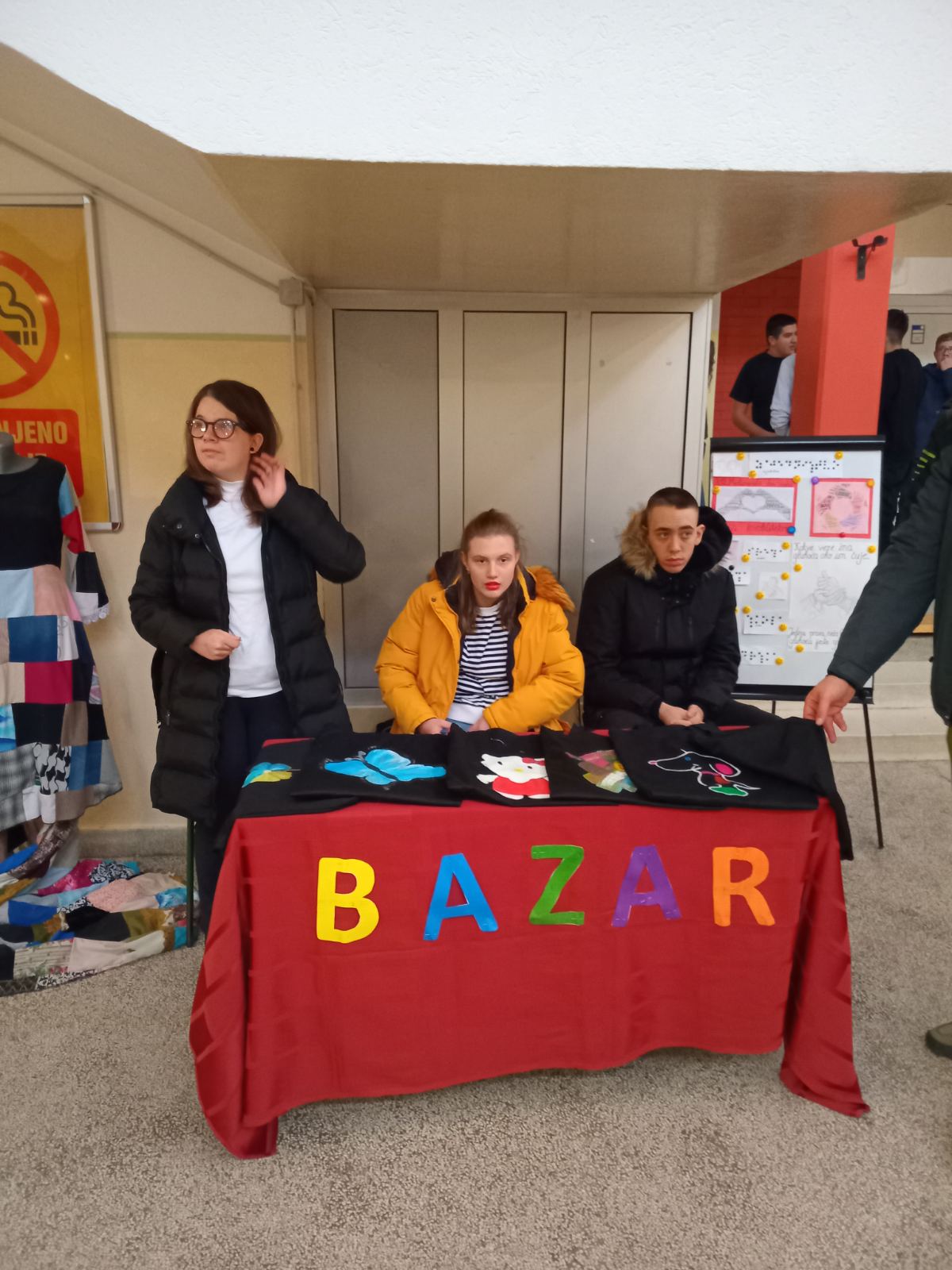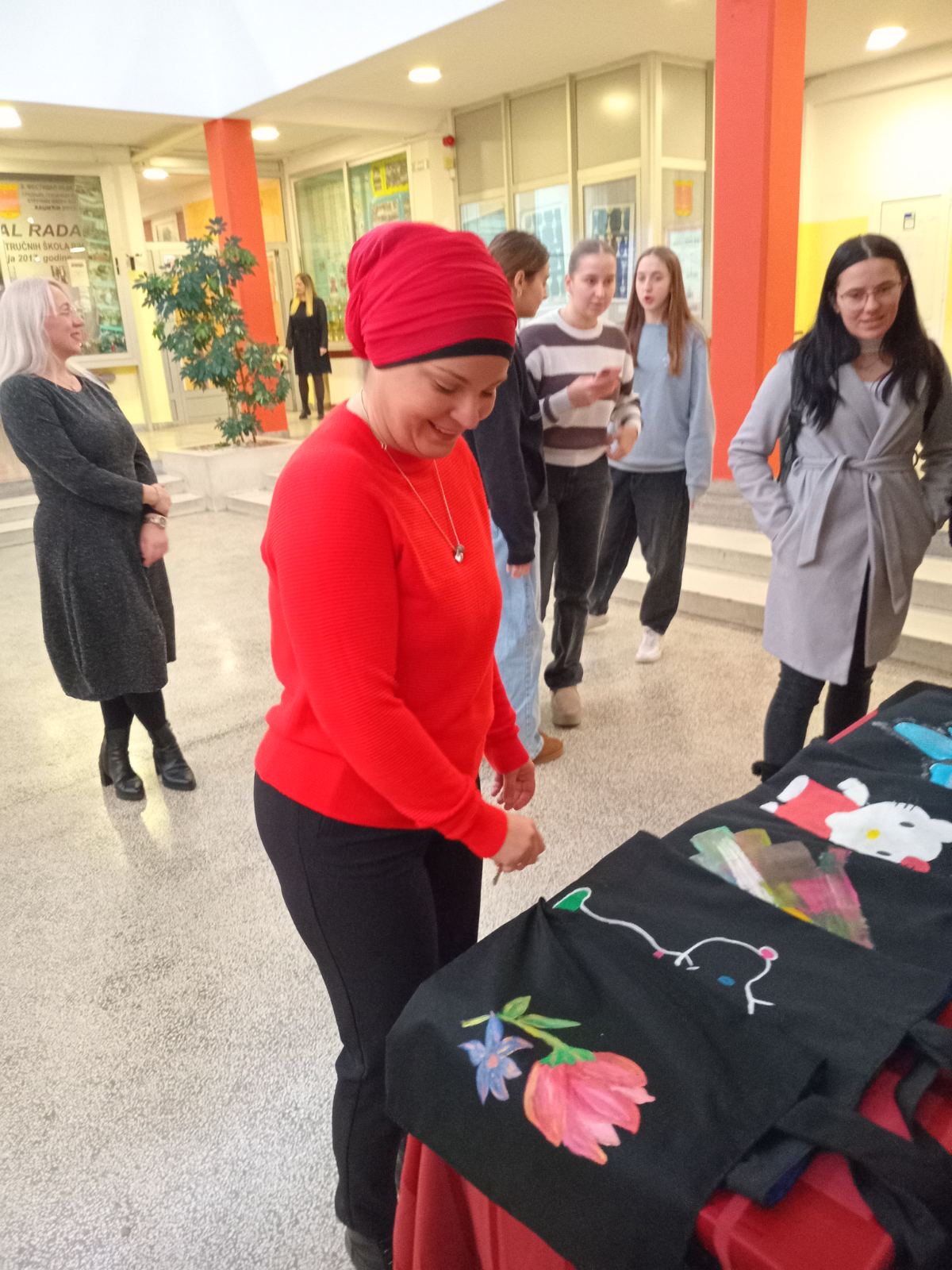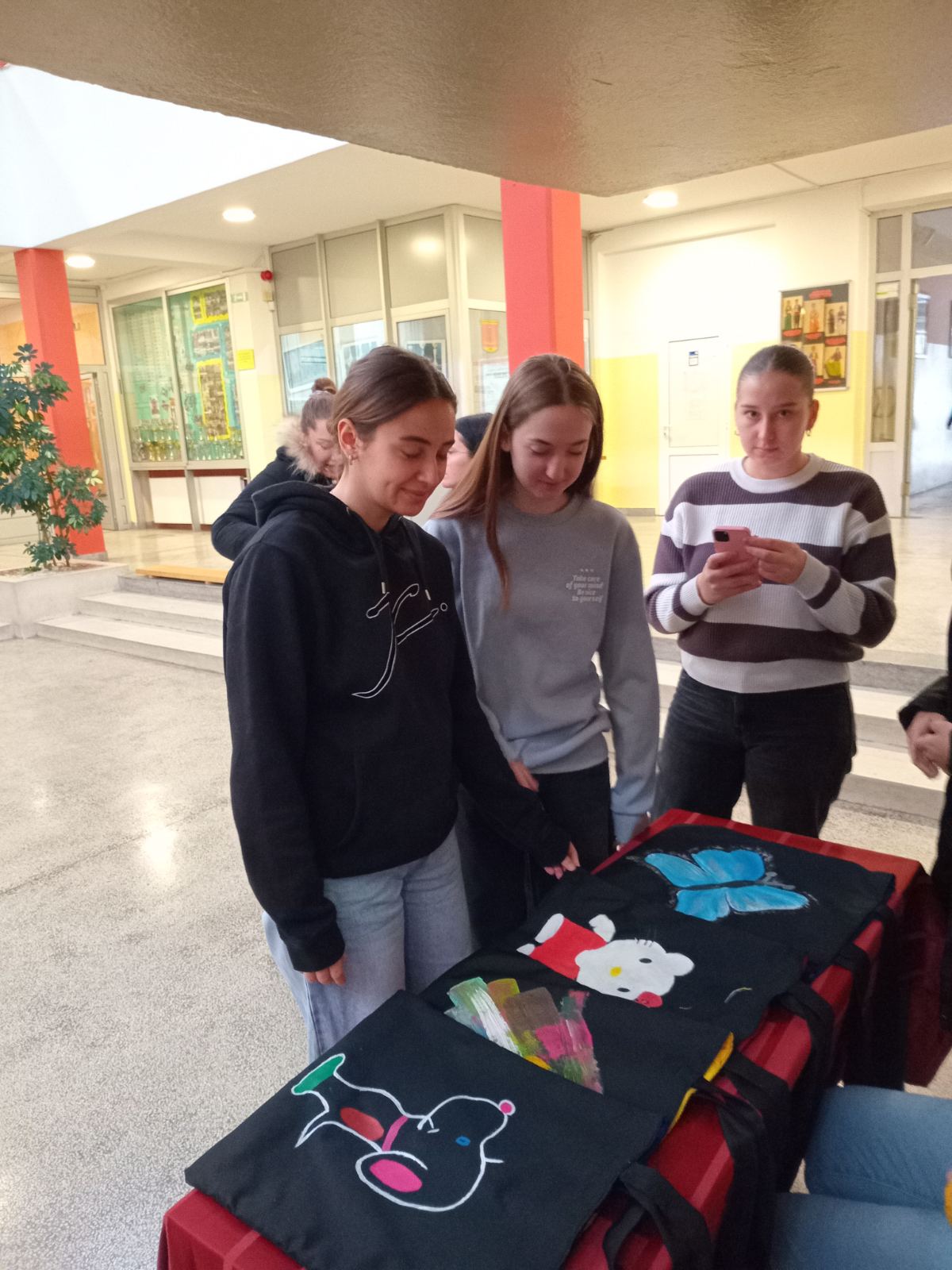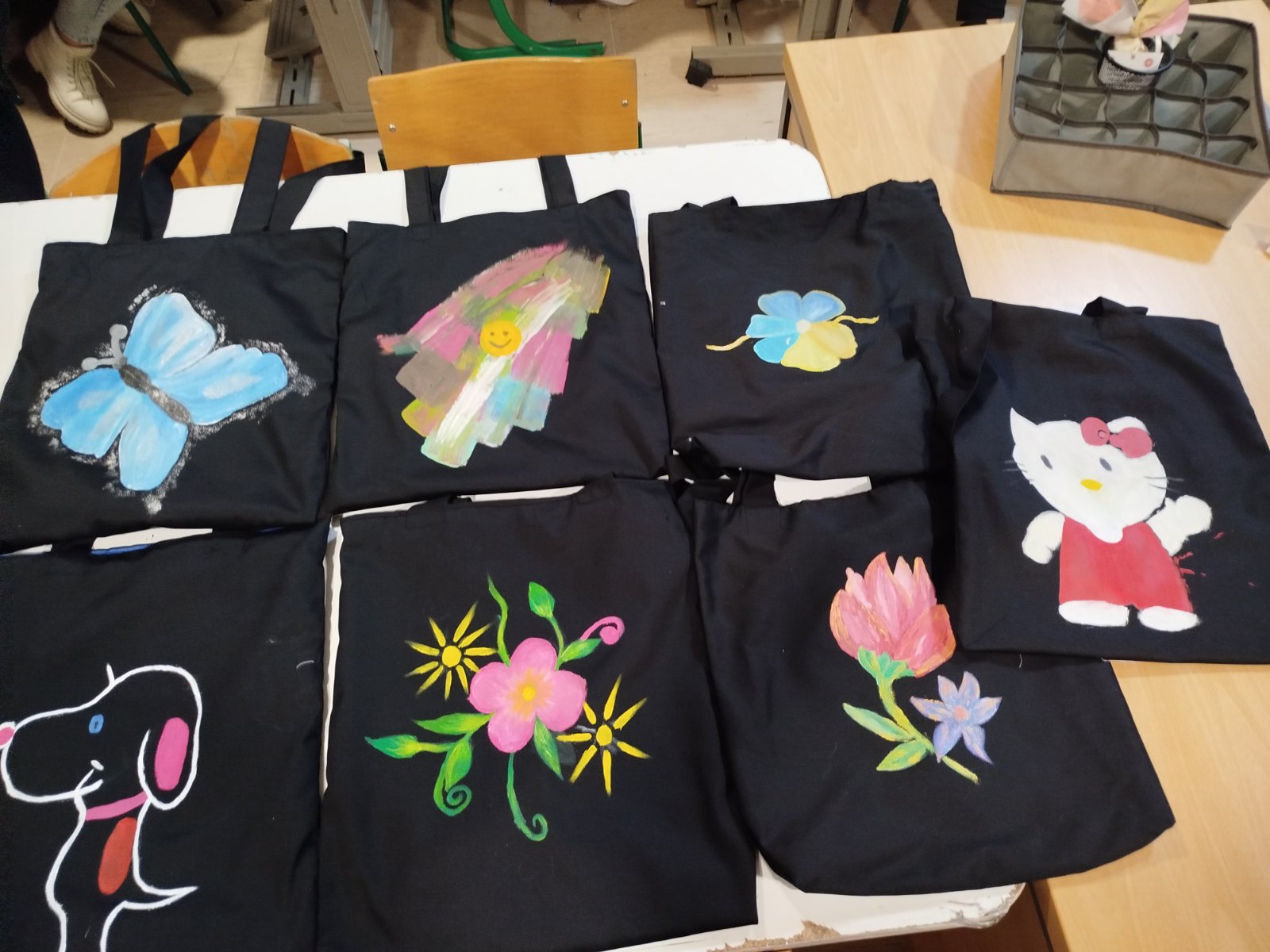Why did you implement the practice? What issues did you want to solve?
This activity was designed as a creative workshop combining artistic expression with socially beneficial work. The fabric bags symbolize sustainability and ecological awareness, while the joint work of students with developmental disabilities and their peers provided an opportunity to strengthen the inclusive environment and develop mutual understanding.
Why did you implement this practice?
The practice was implemented with the goal to:
- Foster culture creativity and artistic expression among students.
- Raise awareness of the importance of solidarity and social responsibility.
- Raise funds to support students in need.
Problems we wanted to solve:
- Lack of opportunities for students to express their creative talents through school activities.
- The need to strengthen solidarity and social connections within the school.
- Support for students from socially disadvantaged backgrounds through tangible actions.







